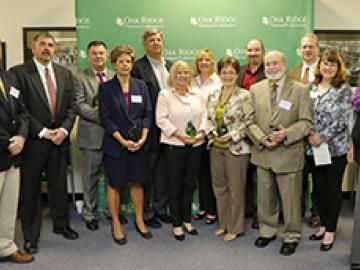
Filter News
Area of Research
- Advanced Manufacturing (3)
- Biological Systems (3)
- Biology and Soft Matter (1)
- Building Technologies (2)
- Chemical and Engineering Materials (2)
- Chemistry and Physics at Interfaces (6)
- Computational Chemistry (1)
- Energy Frontier Research Centers (7)
- Energy Science (41)
- Functional Materials for Energy (6)
- Fusion Energy (1)
- Geographic Information Science and Technology (2)
- Isotope Development and Production (1)
- Materials (39)
- Materials Synthesis from Atoms to Systems (5)
- Materials Under Extremes (6)
- Neutron Data Analysis and Visualization (2)
- Neutron Science (10)
- Nuclear Science and Technology (6)
- Quantum Condensed Matter (2)
- Reactor Technology (1)
- Supercomputing (20)
- Transportation Systems (2)
News Type
Date
Media Contacts

Designers of safe high-performance batteries for electric vehicles are getting a hand with a new computational toolset created by a team led by Sreekanth Pannala and John Turner of Oak Ridge National Laboratory. The software simulates key battery performance indicators, including cha...


A ground source heat pump installed at rural Cedarville High School in Arkansas through the American Recovery and Reinvestment Act has reduced energy use by 53 percent and carbon dioxide emissions by 52 percent, according to an Oak Ridge National Laboratory report. ORNL researchers X...

While reflective roofs can save energy and money for homeowners, microbial communities and the biofilms they create can eat away at the effectiveness and savings. A study led by Mengdawn Cheng and Andre Desjarlais of Oak Ridge National Laboratory found that the amount of energy absor...



Less than 1 percent of Earth’s water is drinkable. Removing salt and other minerals from our biggest available source of water—seawater—may help satisfy a growing global population thirsty for fresh water for drinking, farming, transportation, heating, cooling and industry. But desalination is an energy-intensive process, which concerns those wanting to expand its application.



Rechargeable lithium-ion batteries are commonly found in portable electronics such as cell phones and notebook PCs.

